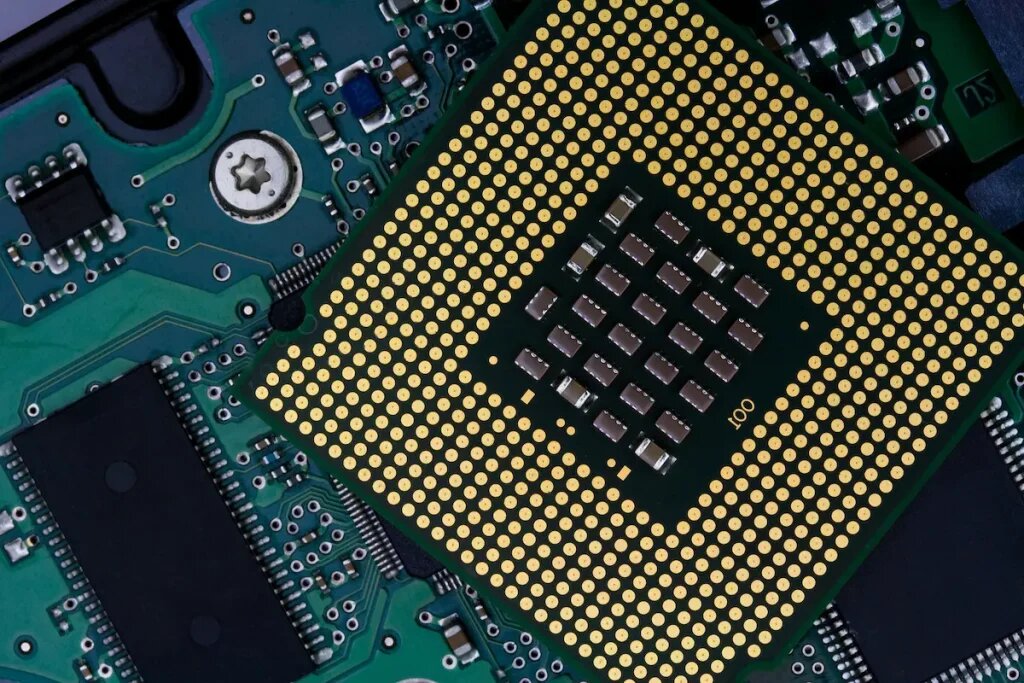From Lithium to Gold: Precious Metals Driving the EV Revolution

Introduction
Welcome to the electric age, fueled by the push for clean, efficient, and sustainable transportation. Electric vehicles (EVs) stand at the frontlines, packed with innovation and groundbreaking technology, they’re redefining the automotive landscape.
But what’s under the hood of these technological marvels? A wealth of precious metals.
Electric vehicles use precious metals such as lithium, cobalt, and nickel in their batteries. Copper is used extensively for wiring, while aluminum is used for lightweight properties. Rare earth elements power motors and silver is used in electronics.
This article seeks to illuminate these unsung heroes. We’ll explore the vital role precious metals play in your electric ride. It’s time to uncover the metals that keep your EV running: the lithium in your battery, the copper in your motor, the nickel, and more.
In this comprehensive guide, we’ll delve into the world of precious metals that power EVs, shining a spotlight on lithium, cobalt, nickel, and even rare earth elements. By the end, you’ll grasp the essential role these metals play in propelling the green revolution. So, ready for a fascinating journey into the metallic heart of your EV? Let’s dive in.
The Growing Demand for Electric Vehicles
The electric vehicle market is booming, fueled by a global shift towards sustainable energy and reduced emissions. In 2022, more than 750,000 new electric vehicles were registered in the United States alone.
This rising demand signals a significant trend. Consumers recognize electr
Here’s a summary table of the precious metals and their uses in electric vehicles:
| Precious Metal | Use in Electric Vehicles |
| Lithium | Primary component in lithium-ion batteries; provides energy storage for driving. |
| Cobalt | Used in lithium-ion batteries to improve stability and safety. |
| Nickel | Enhances energy density in lithium-ion batteries, increasing driving range. |
| Copper | Used extensively in wiring and electric motors due to its high electrical conductivity. |
| Aluminum | Used in car bodies, chassis, and components to reduce weight and improve energy efficiency. |
| Rare Earth Elements (Neodymium, Praseodymium, Dysprosium, etc.) | Used in powerful magnets for electric motors. |
| Silver | Used in various electronic components and sensors due to its high electrical conductivity. |
| Platinum Group Metals (PGMs) | Used in fuel cell electric vehicles and sensor technologies. |
| Gold | Used in small quantities in certain electronic components and sensor applications. |
This table provides a simplified overview, and the actual usage of these metals can vary depending on the specific design and technology of the vehicle.
I’ll now go through each of these in more detail below.
Lithium: The Heart of the Battery
When we talk about EV batteries, lithium is king. It’s not just a precious metal; it’s the lifeblood of every electric vehicle on the road today. With their high energy density and longevity, lithium-ion batteries have become the standard in the EV industry.
Lithium’s unique chemical properties make it ideal for use in batteries. It’s lightweight and highly reactive, which means it can store a large amount of energy in a small package. This high energy density is crucial for EVs as it directly influences the vehicle’s range and performance, although these lithium-ion batteries do need cooling.
Most of the world’s lithium is extracted from hard-rock mines in Australia or lithium-rich brine deposits in South America. As the EV market expands, so does the demand for this vital metal. This rising demand is fueling a global race to secure lithium supplies.
Understanding lithium’s role helps us appreciate the complex interplay of elements that power our EVs. In the following sections, we’ll look at other critical metals like cobalt and nickel, which further enhance the performance of lithium-ion batteries. Strap in for more fascinating insights into the metallic heart of electric vehicles.
Cobalt and Nickel: Enhancing Battery Performance
Venturing further into the realm of EV batteries, we encounter two more significant players – cobalt and nickel. These precious metals work in harmony with lithium to enhance battery performance, bringing unique benefits.
Cobalt plays a crucial role in maintaining the stability of the lithium-ion battery. It prevents overheating and increases longevity, making it a key factor in ensuring your EV’s reliability. However, sourcing cobalt ethically is a concern, given most of the world’s supply originates from regions notorious for questionable mining practices.
Meanwhile, nickel boosts the energy density of the battery. More energy density means your EV can travel longer distances on a single charge. Nickel is primarily sourced from countries like Indonesia, the Philippines, and Russia.
As we strive to make electric vehicles more efficient and sustainable, the importance of cobalt and nickel becomes more pronounced. But the story doesn’t end here. There are other metals at work under the hood of your EV. In the following sections, we’ll explore how copper and aluminum, among others, contribute to the electric revolution. So, stay with us as we continue our journey.
Copper: Wiring the Future
As we switch gears from batteries, let’s focus on another vital component of your EV – the wiring system. Here, copper takes the spotlight. Known for its excellent electrical conductivity, copper is the unsung hero that makes your EV run smoothly.
Copper wiring in an EV is more extensive than in a conventional vehicle. That’s because it connects the battery to the electric motor and also to the inverter, which converts the battery’s direct current to alternating current. More copper equals better efficiency, which is key to the performance of your EV.
The demand for copper in the EV industry is substantial and growing. The International Copper Association estimates that a single electric car can contain up to 183 pounds of copper, compared to 18-49 pounds in a conventional car.
So, the next time you marvel at the smooth performance of your EV, remember the humble copper wire under the hood. But copper isn’t the only metal playing a vital role outside the battery. Read on to discover how aluminum and rare earth elements are also shaping the future of electric vehicles.
Aluminum: Lightweight Strength
Next up on our metallic tour of electric vehicles is aluminum. While not as “precious” as lithium or cobalt, it plays a key role in the design and efficiency of your EV. Here’s why.
Aluminum is lightweight yet sturdy – a winning combination for any vehicle, but especially for EVs. Lighter vehicles require less energy to move, which can significantly boost an electric car’s range. At the same time, aluminum’s strength ensures the structural integrity of the vehicle.
Many EV manufacturers, such as Tesla, extensively use aluminum in the car’s body, chassis, and components to reduce weight. The result? Greater efficiency and improved battery performance.
But using aluminum isn’t just about boosting performance. It also has a sustainability angle. Aluminum is recyclable, meaning it can be reused in future vehicles, reducing the environmental footprint of EV production.
As we continue our journey into the world of precious metals in EVs, we’ll uncover more exciting facts about rare earth elements and silver. So stick around as we uncover the metallic secrets under the hood of your EV.
Rare Earth Elements: Powering the Motor
Let’s shift our attention to the electric motor, another critical component of your EV. Here we find a group of metals known as rare earth elements (REEs). These may not be household names, but their impact on your vehicle’s performance is significant.
Neodymium, praseodymium, and dysprosium, among others, play crucial roles in the manufacture of powerful magnets used in EV motors. These magnets convert electrical energy into mechanical energy, propelling your vehicle forward.
REEs contribute to the motor’s high efficiency, power, and compact size. Without them, achieving the performance we’ve come to expect from electric vehicles would be a challenging feat.
However, the supply of REEs presents a challenge. Most of them are sourced from China, leading to concerns about supply chain reliability and the environmental impact of mining. This has sparked a search for alternatives and improved recycling methods.
Our exploration of precious metals in EVs doesn’t stop here. We still have silver and platinum group metals to discuss. So, stay on board as we delve further into the fascinating world of metals that power your electric ride.
Silver and Platinum Group Metals: The High-End Components
Let’s turn our attention to two more precious elements with pivotal roles in electric vehicles (EVs): silver and the platinum group metals (PGMs). Their contributions, while less visible, are no less significant.
Renowned for its superior electrical conductivity, silver finds use in various electronics within your EV. Silver is extensively used in electrical contacts, circuit boards, and, importantly, sensors. Silver’s exceptional conductivity makes it a key component in pressure sensors, position sensors, and speed sensors that monitor and control your vehicle’s performance.
PGMs, especially platinum and palladium, have a unique role in EVs. Beyond their use in fuel cell vehicles, they’re also integral to sensor technology. Platinum’s linear resistance-temperature relationship and high stability make it ideal for temperature sensors. These sensors monitor and control motor temperature, ensuring efficient and safe EV operation.
Despite the high cost and scarcity of PGMs, their contribution to EV technology is vital. This has sparked ongoing research to find cost-effective alternatives or ways to reduce their usage without compromising performance.
The roles of silver and PGMs underscore the complexity and diversity of metals used in EVs. As we move to the next section, we’ll discuss gold’s limited but valuable role in EVs and look towards the future of precious metals in this industry.
The Limited Role of Gold in EVs
Gold’s role in electric vehicles (EVs) may not be as substantial as lithium or copper, but it is noteworthy. Given its excellent conductivity and resistance to corrosion, gold is used in small quantities in specific electronic components.
In EVs, you’ll find gold in high-reliability connectors and switches, and even in some airbag deployment systems. It’s also used in the control units that manage the battery system, drive train, and other advanced functions. While not extensive, these applications rely on gold’s unique properties to ensure reliable performance.
Gold also finds use in the sensors deployed in EVs, particularly in highly sensitive or critical applications where reliability is paramount. Its resistance to tarnish and corrosion makes it ideal for this purpose.
In conclusion, while the spotlight often falls on lithium, cobalt, and nickel, it’s clear that a diverse cast of precious metals works together to power electric vehicles. From the power-dense lithium-ion batteries to the advanced electronics and powerful motors, these metals are the unsung heroes of the EV revolution, driving us toward a cleaner, greener future.
The Future of Precious Metals in Electric Vehicles
Looking ahead, the demand for precious metals in the electric vehicle (EV) industry is expected to rise as EV adoption accelerates worldwide. This trend brings about its own set of challenges, particularly around supply chain sustainability and ethical sourcing.
To address these issues, manufacturers are exploring different avenues. These include developing recycling technologies for recovering metals from used batteries, designing batteries that require fewer critical metals, and sourcing metals from responsible miners.
Simultaneously, governments and industry bodies are establishing guidelines to ensure ethical and sustainable sourcing of these metals. It’s a complex task, but one that is crucial for the future of the EV industry.
In conclusion, precious metals aren’t just components of electric vehicles – they are the lifeblood of the EV revolution. Their fascinating journey from mine to motor underscores the complexity and interdependence of this vibrant, evolving industry.
In Summary
As we conclude our exploration of precious metals in electric vehicles, it’s clear that these elements form the backbone of the EV revolution. They are not mere spectators but active participants driving us towards a greener future.
However, the demand surge for these metals also underlines the importance of responsible mining and recycling practices. The development and promotion of clean technologies for metal extraction and recycling are essential to minimize the environmental impact.
As consumers, understanding the importance of these metals and the challenges associated with their supply is crucial. It helps us appreciate the intricate balance between technological advancement and environmental sustainability.
Ultimately, the story of precious metals in EVs is a testament to human ingenuity and our ongoing quest for sustainable mobility. It’s a narrative that will continue to evolve as we strive to make electric vehicles more efficient, affordable, and environmentally friendly.
Source : electricvehicleofficial.com



